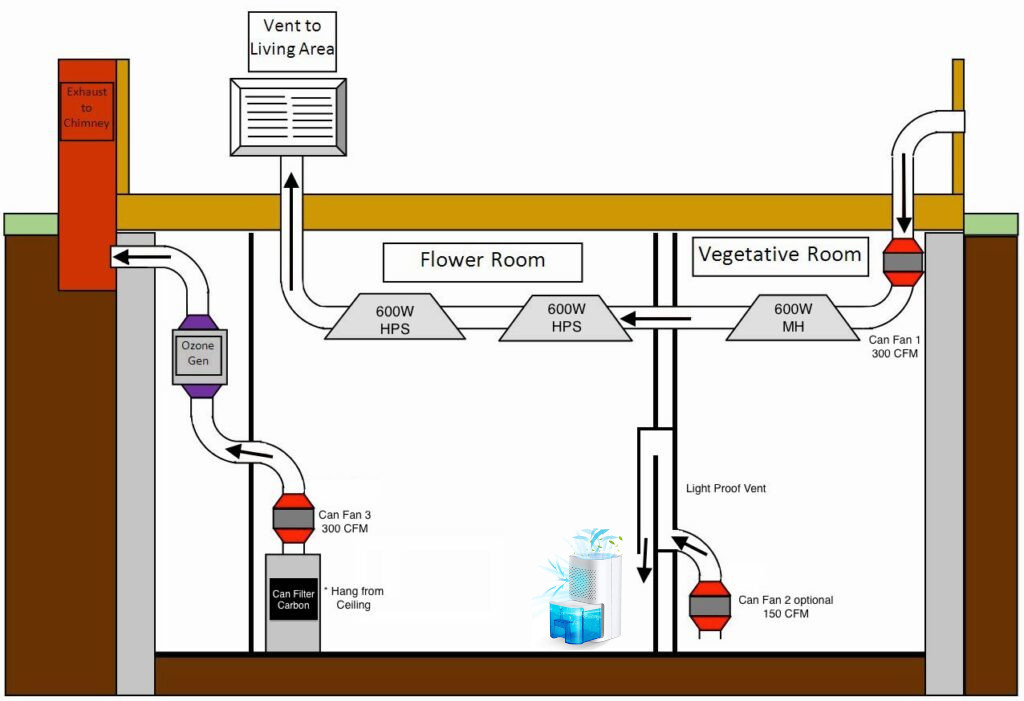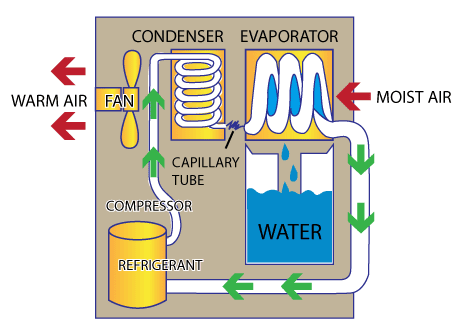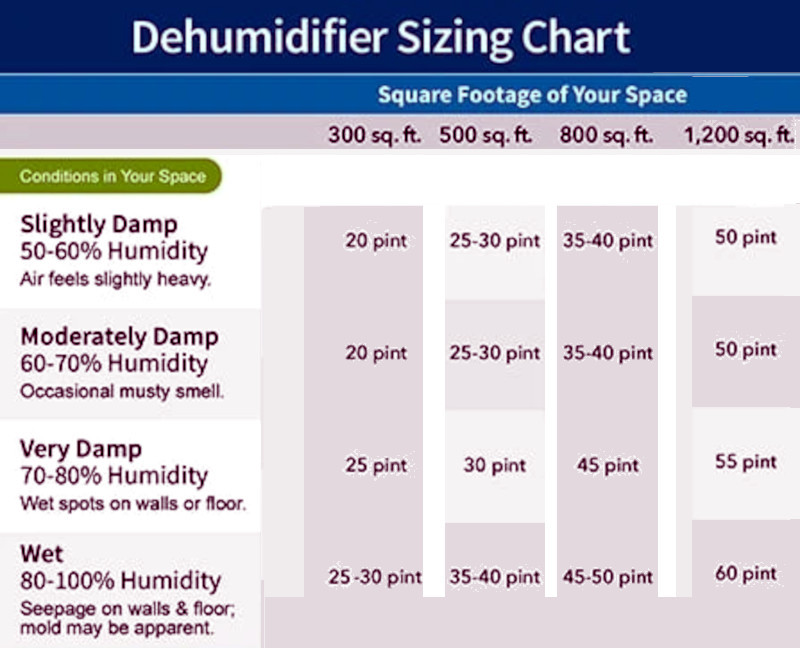When it comes to setting up an indoor garden or greenhouse, one crucial aspect that is often overlooked is controlling the moisture levels in the grow room. Excessive humidity can lead to mold, pests, and other issues that can harm your plants. That’s where a dehumidifier comes in. In this comprehensive guide, we will walk you through the process of sizing and selecting the right dehumidifier for your grow room. Whether you are a beginner or an experienced grower, this guide will provide you with all the information you need to make an informed decision.
Understanding the Importance of Sizing a Dehumidifier
Choosing the right size dehumidifier is vital for maintaining optimal humidity levels in your grow room. If you select an undersized dehumidifier, it won’t be able to effectively remove excess moisture, leading to a range of problems including mold growth, pest infestations, and powdery mildew. On the other hand, an oversized dehumidifier can lead to unnecessary energy consumption and potentially damage your plants by drying them out too much. Therefore, understanding how to properly size your dehumidifier is crucial for the success of your indoor garden.
Factors to Consider When Sizing a Dehumidifier
To accurately determine the size of the dehumidifier you need for your grow room, there are several factors you should take into consideration:
1. Pints Per Day Removed
The most important factor to consider when sizing a dehumidifier is its capacity to remove moisture from the air. Dehumidifiers are typically rated in terms of how many pints of water they can remove per day. It is essential to choose a dehumidifier that can handle the amount of water your plants transpire each day. As a general rule of thumb, the dehumidifier should be able to remove roughly the same amount of water that you give to your plants.
2. BTU’s Produced
Another critical factor to consider is the BTU (British Thermal Units) produced by the dehumidifier. BTU is a measure of the heat energy generated by the equipment. If the dehumidifier produces too many BTUs for your grow room, it can create an unfavorable environment for your plants. Therefore, it’s essential to ensure that the dehumidifier’s BTU output is suitable for your specific space.
3. Grow Room Size
The size of your grow room plays a significant role in determining the appropriate size of the dehumidifier. A larger grow room will require a more powerful dehumidifier, while a smaller space may only need a compact unit. Measure the square footage of your grow room and consider any additional factors such as height, insulation, and air circulation to accurately determine the size of the dehumidifier you need.

4. Watering Frequency and Method
The amount of water you give to your plants and the watering method you use will impact the dehumidifier’s size requirements. If you water your plants daily, you will need a dehumidifier that can handle the corresponding amount of moisture. Consider the number of plants, the volume of water used per plant, and the frequency of watering to calculate the total moisture load for your grow room.
5. Hydroponic Systems
If you are using a hydroponic system, the calculation for sizing your dehumidifier is slightly different. Take into account the water capacity of your hydroponic system, including any reservoirs without lids. Since your plants won’t consume all the water in the reservoir, dividing the total pints by the number of days you change or top off the reservoir will provide a more accurate sizing.
6. Additional Factors
There are a few additional factors that may influence the size of the dehumidifier you need. If you are running an air-conditioner in your grow room, it will remove some of the moisture from the air. Consider the dehumidifying capacity of your air-conditioner and subtract it from your daily dehumidification needs. Additionally, if you are using CO2 or exhausting air from your room, these factors can increase humidity levels and affect the effectiveness of the dehumidifier. Adjust the dehumidification performance accordingly to compensate for these factors.
Sizing a Dehumidifier
Now that you understand the factors to consider when sizing a dehumidifier, let’s walk through the process of calculating the appropriate size for your grow room.
Dehumidifier Sizing Chart:
| Step | Calculation | Example (for illustration) |
|---|---|---|
| Step 1 | Determine Daily Watering Volume | 20 plants x 1 gallon per plant = 20 gallons/day |
| Step 2 | Convert Gallons to Pints | 20 gallons x 8 pints/gallon = 160 pints/day |
| Step 3 | Adjust for Watering Frequency (e.g., every other day) | 160 pints/day ÷ 2 = 80 pints/day |
| Step 4 | Consider Additional Factors (e.g., AC, CO2 impact) | Adjust as needed based on specific circumstances |
Formula:
Total Pints/Day=(Number of Plants×Watering Volume per Plant (gallons)×8)÷Watering Frequency AdjustmentTotal Pints/Day=(Number of Plants×Watering Volume per Plant (gallons)×8)÷Watering Frequency Adjustment
Step 1: Determine Daily Watering Volume
The first step is to determine the amount of water you give to your plants each day. Consider the number of plants and the volume of water used per plant. For example, if you have 20 plants and water each plant with 1 gallon per day, you will be giving a total of 20 gallons of water to your plants daily.
Step 2: Convert Gallons to Pints
Dehumidifiers are typically rated in pints, so you need to convert the total gallons of water to pints. Multiply the number of gallons by 8 to convert to pints. In our example, 20 gallons would be equivalent to 160 pints of moisture that need to be removed from the grow room.
Step 3: Adjust for Watering Frequency
If you water your plants every other day instead of daily, divide the total pints by 2 to get the average per day. This adjustment accounts for the fact that you are not watering your plants every day.
Step 4: Consider Additional Factors
Take into account any additional factors such as the capacity of your air-conditioner to remove moisture and the impact of CO2 or air exhaust on humidity levels. Adjust the dehumidification requirements accordingly to ensure optimal performance.
Selecting the Right Dehumidifier for Your Grow Room
Now that you have calculated the size of the dehumidifier you need, it’s time to select the right unit for your grow room. Here are some key considerations to keep in mind:
1. Dehumidifier Capacity
Choose a dehumidifier with a capacity that matches or slightly exceeds the calculated pints per day removal rate. It’s better to have a slightly larger dehumidifier than a smaller one to ensure effective moisture control.
2. Energy Efficiency
Consider the energy efficiency of the dehumidifier. Look for models that are Energy Star certified, as they are designed to consume less energy while providing the same level of performance.
3. Noise Level
If noise is a concern, opt for a dehumidifier with a lower decibel rating. This is especially important if you plan to place the dehumidifier near living spaces or work areas.
4. Portability and Placement
Consider the portability and placement options of the dehumidifier. If you need to move it around frequently or have limited space, look for compact and lightweight models that are easy to maneuver.
5. Additional Features
Some dehumidifiers come with additional features such as built-in humidistats, timers, and automatic shutoff. These features can enhance convenience and help maintain optimal humidity levels in your grow room.
Conclusion
Sizing and selecting the right dehumidifier for your grow room is essential for maintaining optimal humidity levels and ensuring the health and productivity of your plants. By considering factors such as pints per day removed, BTU’s produced, grow room size, watering frequency, and additional factors, you can accurately calculate the size of the dehumidifier you need. Once you have determined the appropriate size, consider factors such as dehumidifier capacity, energy efficiency, noise level, portability, and additional features to select the right unit for your specific needs. With the proper dehumidification system in place, you can create an ideal environment for your indoor garden and maximize your plant’s growth potential.




